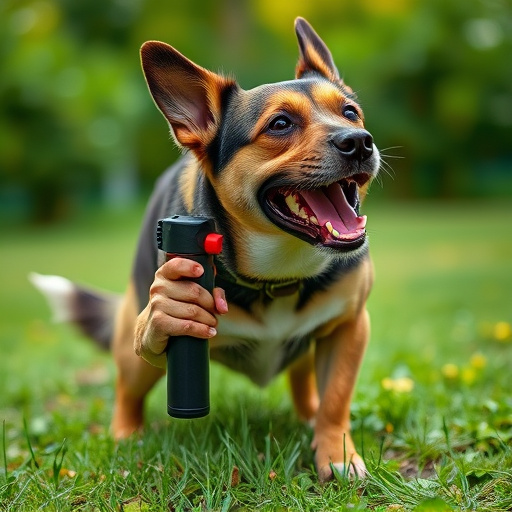Dog pepper spray, featuring capsaicin and other ingredients, is a non-lethal self-defense tool for aggressive canine encounters. Effective against even strong dogs, it irritates sensitive areas when sprayed on the face or fur, encouraging retreat. Safe handling, local law adherence, proper storage, and practice are essential. Used responsibly as a last resort, pepper spray formulation can incapacitate dogs without permanent harm.
“Uncover the power of dog pepper spray defense—a game-changer in safeguarding yourself against aggressive canines. This comprehensive guide explores the science behind its formulation, delving into the ingredients that make it effective against dogs. Learn safe use techniques to ensure optimal protection and understand legal considerations when employing this self-defense tool. Discover best practices for navigating a dog’s attack with confidence, armed with knowledge of the right pepper spray formulation for maximum impact.”
- Understanding Dog Pepper Spray: Ingredients and Effectiveness
- Safe Use and Handling Techniques for Optimal Protection
- Legal Considerations and Best Practices for Self-Defense with Pepper Spray Against Dogs
Understanding Dog Pepper Spray: Ingredients and Effectiveness
Dog pepper spray is designed as a non-lethal self-defense tool for situations involving aggressive canine encounters. Its formulation varies from standard pepper spray, focusing on ingredients that are effective against dogs while minimizing harm to humans. These sprays typically contain capsaicin, the active ingredient found in chili peppers, which irritates the dog’s eyes, nose, and throat when sprayed directly onto their face or fur. The concentration of capsaicin can vary significantly across brands, with higher concentrations aiming to ensure its effectiveness against even the most aggressive dogs.
In addition to capsaicin, some formulations incorporate other agents like black pepper oil and citric acid, which enhance the spray’s potency and duration. These ingredients collectively create an unpleasant sensory experience for the dog, encouraging them to retreat and de-escalate rather than attack. The effectiveness of dog pepper spray against aggressive dogs is well documented, making it a valuable resource for dog owners, pet sitters, and professionals who work with canines in potentially high-risk situations.
Safe Use and Handling Techniques for Optimal Protection
When utilizing pepper spray as a defense against aggressive dogs, it’s paramount to employ safe handling techniques for optimal protection. Always check local laws and regulations regarding the use of pepper spray, ensuring you have the appropriate permit if required. Before engaging any animal, familiarize yourself with the spray’s range, timing, and effects. Proper storage is equally crucial; keep the spray in a secure, out-of-reach area to prevent unauthorized access, especially children or pets.
For effective protection against pepper spray formulation against aggressive dogs, it’s essential to understand the spray’s quick-acting components. These compounds temporarily disrupt an animal’s vision, breathing, and sense of balance, providing you with a crucial escape window. Regularly maintain and inspect your spray device, ensuring it is in working order. Practice using the spray in controlled environments, like simulated dog encounters, to build confidence and ensure proper application techniques for maximum effectiveness and minimal collateral damage.
Legal Considerations and Best Practices for Self-Defense with Pepper Spray Against Dogs
When considering pepper spray as a self-defense tool against aggressive dogs, it’s crucial to understand the legal implications in your region. Each jurisdiction has specific regulations on the use of pepper spray, and using it inappropriately could result in fines or legal charges. It is essential to consult local laws and ensure you only deploy pepper spray when facing an imminent threat from a dog that poses a significant harm to your safety.
Best practices dictate that individuals should only resort to pepper spray as a last resort when all other de-escalation methods have failed. Training in proper usage, including learning the appropriate range and wind conditions for optimal effectiveness, is vital. Additionally, keeping pepper spray easily accessible but out of reach of children or untrained individuals can help ensure its responsible use. The right pepper spray formulation against aggressive dogs, designed specifically to incapacitate without causing permanent harm, remains a key element in effective self-defense strategies.
Dog pepper spray can be an effective self-defense tool when used responsibly. Understanding the unique formulation targeted at aggressive dogs, safe handling practices, and legal considerations is key to optimal protection. By adhering to best practices, individuals can empower themselves to defend against potential canine assaults while ensuring their actions are within legal bounds. Remember, proper training and a well-informed approach are essential for responsible use in any situation.
